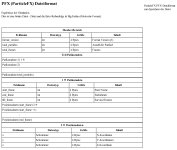maxim capra
New member
hey,
does anybody know how i could find information on how the .fcache files are structured? i did have a look in the SDK, but i couldn't find the right information. currently i'm trying to reverse engineer it, looking at the hex values. but it's tedious. it's similar to all the other cache files like .mdd or .pfx, but a solid information about it would be useful. what i'm looking for is a cache format with particle rotation, because i would like to write an exporter for houdini and 3dsmax to get particles into lightwave - it seems pfx doesn't support that - position is not enough!
for your information: fcache ist the cache file of the new flocking system in lw11
thanks,
Philipp
does anybody know how i could find information on how the .fcache files are structured? i did have a look in the SDK, but i couldn't find the right information. currently i'm trying to reverse engineer it, looking at the hex values. but it's tedious. it's similar to all the other cache files like .mdd or .pfx, but a solid information about it would be useful. what i'm looking for is a cache format with particle rotation, because i would like to write an exporter for houdini and 3dsmax to get particles into lightwave - it seems pfx doesn't support that - position is not enough!
for your information: fcache ist the cache file of the new flocking system in lw11
thanks,
Philipp

